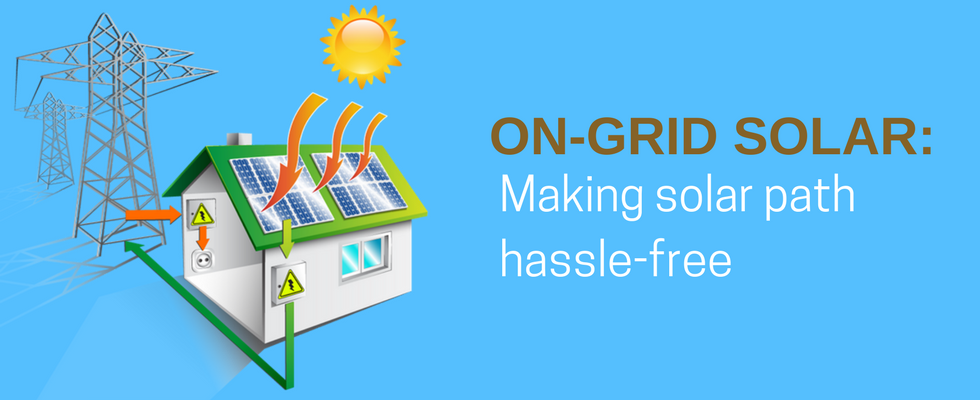On-Grid Solar Power System: Placing India Right on the Solar Track
Solar PV technology to generate electricity from solar energy is gaining momentum, slowly but steadily. This progress has been slow due to the deprivation of economic feasibility for the Indian populace. But recent developments testify the productivity of going solar. There is a considerable drop in the prices of the solar PVs. Besides, the Government of India has implemented some significant policies conducive for the promotion and dissemination of solar PV technology. The use of solar energy, a free renewable resource that saves electricity bills and increases the green footprint, is an alternative worthy of choice.
An On-Grid Solar Power System or grid-connected PV power system is an electricity generating system that is connected to the utility grid. The benefits that it offers can succinctly unravel the intricacies of going solar that has since so long plagued the minds of the people. All that is needed is proper implementation strategies. When there is a shortage or no generation of electricity, an on-grid solar power system comes handy. Even when electricity is produced in excess compared to the requirement, the excess energy can be sold back to the utility grid. A meter connected to the solar PV system tracks the energy difference and the profit that you make.
Gross metering facilitates the entire energy generated by the on-grid system to be fed back directly into the utility grid. The owner of the on-grid system with gross metering reaps benefits based upon the feed-in tariffs directly proportional to the energy that is fed back to the utility grid.
Net Metering tracks the net energy which is the result of both selling the generated energy to the utility supplier and buying the energy from them. This can be achieved utilizing 1 or 2 meters, as per the rules of the state, which facilitates recording both the buying and the selling of electricity. When an excess of energy is generated by the on-grid solar power system, it is sold back rather than being stored using a battery. Apart from this, there are times when there is a dearth of sunshine—on a rainy day or during the night. In such cases, when there is a deficit in the power generated by the system, power is drawn from the grid. Based on the amount of electricity drawn or sold back to the utility, the supplier charges the user or gives credit or pays the requisite amount. Different states have different policies and directives based on which the incentives and charges may vary somewhat.
An on-grid solar power system grants financial benefits to the asset-owners and makes them independent of the cumbersome and costly batteries. These reasons are good enough to extend the adoption of solar solutions by the citizenry, and make the dream of clean and green future come true.



